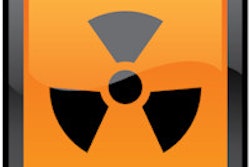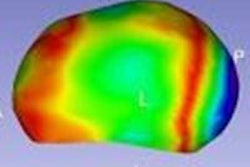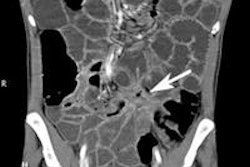When radiologists have access to radiation exposure histories for patients, most will take them into consideration when assessing the risk of further exposure in future imaging exams, according to a new study published in the June issue of the American Journal of Roentgenology.
Most radiologists think that this practice is in keeping with the linear no-threshold model, a clinical framework meant to quantify radiation exposure and set regulatory limits, the authors wrote. But it's not: The linear no-threshold model states that a new exposure to radiation carries the same risk whether or not a patient has had prior exposures.
Why is this confusion a problem? It could lead to radiologists ordering fewer beneficial imaging tests in an effort to reduce patients' radiation risk, according to lead author Dr. Pari Pandharipande, from Massachusetts General Hospital, and colleagues.
"For a given patient, there is no threshold beyond which a disproportionate increase in cancer risk will occur with an additional radiation exposure," Pandharipande's team wrote. "Therefore, when a physician considers ordering a CT for a patient with an exposure history, the physician's risk-benefit analysis should include only risks from the CT under consideration; previously incurred risks cannot be mitigated and should not affect decision-making" (AJR, June 2013, Vol. 200:6, pp. 1275-1282).
The group conducted a physician survey in three academic medical centers between April and June 2012. The survey asked participants to decide whether to recommend a standard abdominal CT for a hypothetical patient with a history of multiple CT scans. Pandharipande's team expected that if radiologists were aware of the linear no-threshold model and used it, they would not take previous imaging exposures into consideration when faced with the possibility of ordering another imaging exam.
In all, 322 radiologists responded (86 residents, 60 fellows, and 176 attending physicians). Of these, 92% said that the hypothetical patient's exposure history influenced their final decision about a future imaging exam -- and 74% recommended a reduced-dose strategy, mostly ultrasound, according to the researchers.
The majority of survey participants (61%) reported that they understood and used the linear no-threshold model in making imaging recommendations, while 25% said they rejected the framework, and 15% said they couldn't judge whether they accepted or rejected it.
Only 36% of those radiologists who said they either accepted and used the model or rejected it made a recommendation consistent with those beliefs, Pandharipande's team wrote: In fact, of the 92% of participants who responded that the hypothetical patient's exposure history influenced their final recommendation, 60% said they ascribed to the linear no-threshold model.
The authors emphasized that knowledge of a patient's radiation exposure history is valuable: If a patient with nonspecific abdominal pain has had five negative CTs in a month, physicians should consider whether another would be beneficial. But the study does show that there's a need for more education on radiation dose and decision-making, according to the group.
"Our findings raise concern that many radiologists have a limited understanding of how to address patient exposure histories when making prospective imaging decisions and underscore the need for related educational interventions," Pandharipande and colleagues wrote. "Our results also suggest that making individual patient exposure histories available to ordering physicians may lead to undesirable effects on decision-making regarding the use of imaging."




















